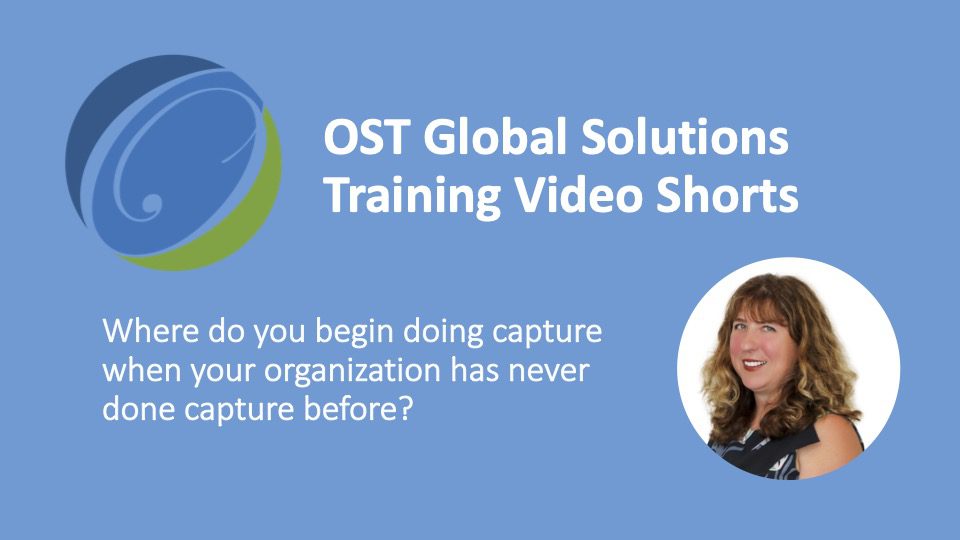I get asked a question often: “Where do we begin doing capture when our organization has never done capture before?”
What I tell people is start small. Do not dive into the whole capture shebang, start with opportunity qualification.
Let me give you the context. There is the whole BD lifecycle. We have opportunity identification where you identify opportunities for your pipeline. Then you need to qualify each opportunity. In other words, you need to look at the opportunity in great detail and figure out, do we even have a chance to win?
Before you dive into the whole bottom-up capture properly, you need to do top-down capture. Top-down capture is what the qualification process actually is.
What do you actually do during opportunity qualification? You need to gather facts about that opportunity. All the basics, who is the agency? What kind of competition is this? How many full-time equivalents this may be? Do you know the dollar value, approximately, is there an incumbent, so on and so forth? There’s a whole slew of facts you need to know about the opportunity.
But the next question, is this opportunity real? A lot of the times what people have in their pipelines is a bunch of fluff. Where did you get those opportunities from? You got them out of a paid database. Did you actually verify these opportunities with a customer? You have to verify the opportunities with a customer to make sure they’re real, they’re funded, they are actually in their plan to issue. What is their acquisition strategy?
You also need to go ahead and figure out who is the customer? What do they want? What do they need? The customer I mean by their detailed org chart, and the people who are going to be involved in this procurement.
You also need to look at everything that’s been published about this opportunity. Are there any hidden gotchas in the project’s background? Things that you should know about that weigh into your decision?
Next is your top-down win strategy, how would you win this contract? Do you even have a chance?
Competitive analysis, us there an incumbent, and are they in favor, or at least superficially? Now it’s hard to know truly and get the depth of information because we may hear from one person in the Government but not the other. But at least a little bit of information, right? We can pick up on the obvious stuff right from the beginning. If the customer is competing early, the incumbent may be out of favor. Are there any other really serious contenders who would be going after this opportunity and what kind of competition would you have to face?
The other aspect is teaming. Would you need a teaming partner? Would you go after this with a teaming partner and do a little bit better than without a teaming partner?
You would also look at the very conceptual initial solution. Do you even have the capability to deliver what the customer is asking for?
Then lets you look at the parameters of the opportunity fit. Are there some filters there, that it would have to pass to qualify? For example, I may have my filters set where I only go for local opportunities, I don’t want to be outside of my area. Or those filters may be where this asks for certifications I don’t actually have. Essentially the qualifications I don’t have; what types of people; or clearances I don’t have? You have to take an opportunity through a series of filters. Once you take it through the series of filters, you then can make a good decision on whether it’s qualified or not.
Then you are in a position to go ahead and do develop a set of action items that you can then follow.
You don’t have to go through this big sort of formal capture process for most of the opportunities. Because this sort of simple analysis gives you enough to go forward and position yourself for the proposal period, after the RFP issuance, and arrive there in style. So, you don’t need to have a full-blown capture process to begin with.
Then, after you are in the habit of doing those mini-captures, and you are in the habit of qualifying opportunities really well while gathering that data, the initial stages, then you can dive into deeper analysis that usually are required for really large opportunities. So, start small.
OST Global Solutions is a professional business development consulting firm. We provide capture and proposal teams to develop winning proposals. Or we can provide consultants on a case-by-case basis to fill gaps on your business development team, including running your color team reviews. Our services consist of capture management, proposal management, orals coaching, proposal writing, graphics support, editing, desktop publishing, and cost volume development.
Reach out to us to discuss how we can help you develop a winning proposal.
service@ostglobalsolutions.com
Upcoming Bid & Proposal Academy Classes
Proposal Graphics Conceptualization & Design (Live Class)
OST Global Solutions Virtual Classroom MD, United StatesThis course provides the skills necessary to conceptualize proposal graphics that convey your winning solution to Government customers. In addition to brainstorming on a graphic idea, this training shows you how to design an action caption, sketch a graphic concept, deliver a specific visual message to the Government customer, and use professional graphic design principles and resources to make your graphics look attractive.
Writing Persuasive Government Proposals Including AI Essentials (Live Class)
OST Global Solutions Virtual Classroom MD, United StatesThis proposal writing course shows how to develop compliant and highly persuasive proposal sections in half the time, to increase your Government proposals' win probability. Learn to outline within the proposal sections for compliance and responsiveness, brainstorm as a group and individually to develop proposal section content, infuse proper structure and flow into your sections, and implement the correct writing process. Learn proposal persuasion techniques. Learn More



